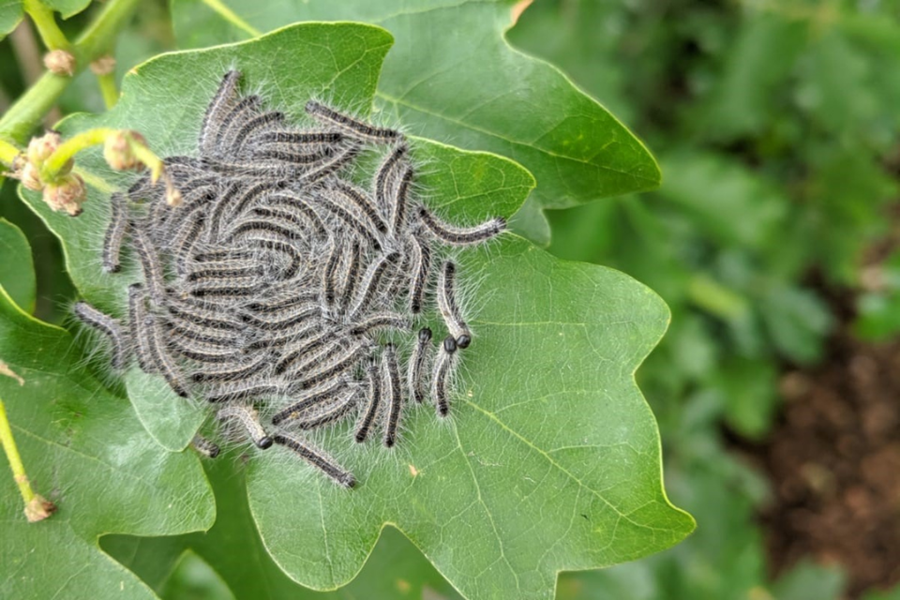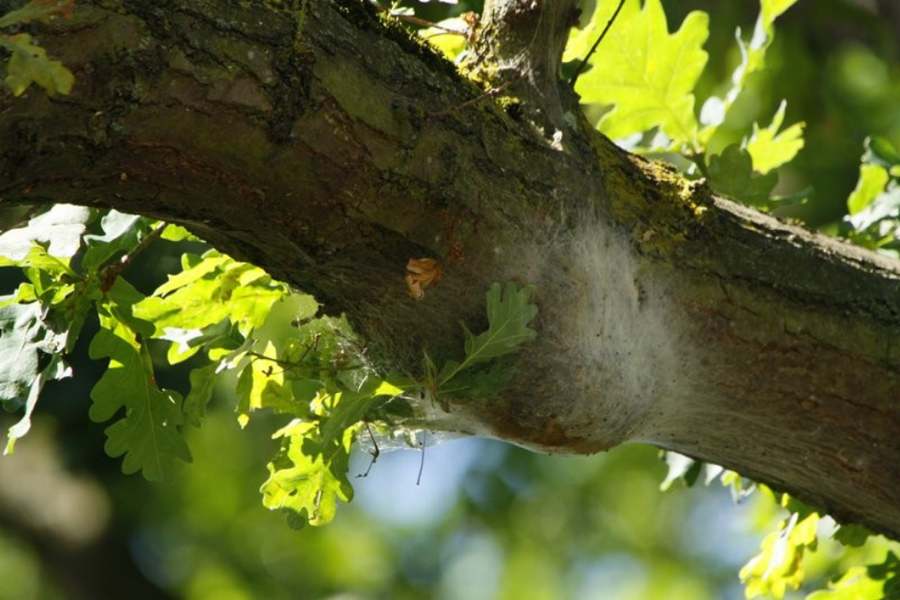Oak Processionary Moth (OPM)
Caterpillars of the oak processionary moth (OPM) are a pest which can be a hazard to the health of oak trees, people and animals in this area.
The main threat posed by Oak Processionary Moths comes from their caterpillar stage. The caterpillars are covered with tiny, barbed hairs containing a toxic substance called thaumetopoein. When these hairs come into contact with the skin, eyes, or respiratory system of humans and animals, they can cause severe allergic reactions, ranging from skin rashes and itching to respiratory issues and eye irritation. Their tiny hairs can be blown about by the wind and cause itchy skin rashes, eye and throat irritations and, occasionally, breathing difficulties in people and animals.
The caterpillars of Oak Processionary Moths feed on oak leaves, causing defoliation and weakening the trees. Severe infestations can lead to the decline and even death of oak trees.

The Forestry Commission, local authorities and landowners are working hard to control this pest so that we can continue to safely enjoy our parks, gardens and woodlands. You can help by reporting signs of OPM to The Forestry Commission.
Identifying Nests
Oak Processionary Moths construct distinct nests, which are crucial in identifying their presence. The nests are usually found on the trunks of oak trees and have a characteristic silk-like appearance. The nests are often shaped like a teardrop or a flattened cylinder and are densely covered with the caterpillar's barbed hairs.
But first, please: • CHECK that they’re in or near an oak tree – OPM caterpillars usually only attack other trees if they run out of oak leaves to eat.
Identifying Oak Trees
Properly identifying oak trees is essential for monitoring and managing Oak Processionary Moth populations. Here are some key features to look for when identifying oak trees:
- Leaves: Oak leaves are typically lobed and have a distinct shape. The number and depth of lobes can vary between different oak species.
- Bark: Oak trees have rough, furrowed bark, which becomes more pronounced as the tree matures.
- Acorns: Oak trees produce acorns, which are distinctive fruits with a cap covering the nut.
- Branching Pattern: The branches of oak trees tend to grow in a characteristic alternating pattern.
- Size: Mature oak trees can vary in size depending on the species, but they are generally large and impressive trees.
If you see nests or caterpillars:
- Follow the advice in this leaflet for staying safe.
- Report it using our Tree Alert on-line reporting form at treealert.forestresearch.gov.uk; or
- E-mail it to opm@forestrycommission.gov.uk, or telephone it to 0300 067 4442. • When submitting a report, please include photographs and location details.

For OPM tools and resources, visit www.gov.uk/guidance/managing-oak-processionary-moth-in-england
Tel: 0300 067 4442
E-mail: opm@forestrycommission.gov.uk
Health information is available from NHS Choices at nhs.uk/conditions/insect-bites-and-stings
For more information on tree pests and diseases, visit gov.uk/government/collections/tree-pests-and-diseases
